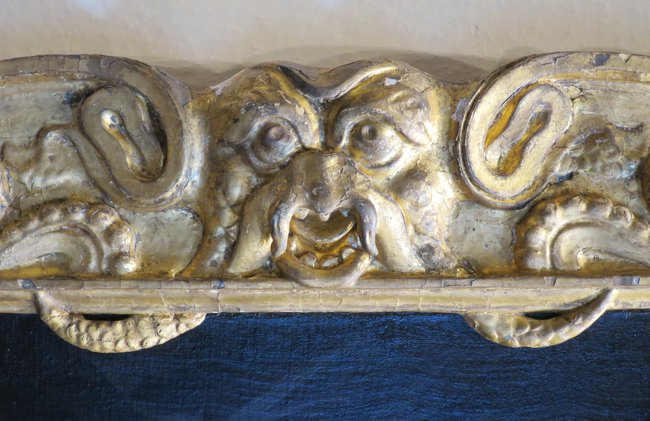7. Leatherwork and Kwab Frames
17th-Century Auricular Picture Frames and their Anglo-Dutch Context
Gerry Alabone
This article reconsiders England’s contribution to the auricular style of frame and its creative exchange with the Netherlands during the 17th century. It argues for auricular style frames to be considered an Anglo-Dutch project. However, the article also argues that their development was not only one of binary exchange between England and the Netherlands but started with the adoption of Italian design and construction techniques in England; and traces how these Italianate frames incrementally but rapidly developed into auricular examples. Through a close comparative analysis of extant frames, contemporary designs, technical and scientific analysis of materials and construction, where little documentary material survives, this research confirms that sophisticated carved and gilded auricular frames were first made in England during the second half of the 1630s, over ten years prior to those produced in the Netherlands. The earliest auricular frames made in the Netherlands are dated in the literature to after 1650; and it is possible that Florentine ‘Medici’ frames, often called auricular, also started being made around the mid-century.1 Reinier Baarsen states ‘As in the Netherlands, there is still much uncertainty about the early history of auricular frames in England’.2 While English and Netherlandish auricular frames shared some common design characteristics, their differences in timber, joinery and gilding point to independent production, countering the accepted view that English framemakers were reliant upon their Netherlandish counterparts.
English auricular frames have received less scholarly attention than their Dutch equivalents. However, this article considers the influence of Netherlandish designs at the court of Charles I (reigned 1625-1649) which, along with the presence in London of painters such as Sir Anthony van Dyck (1599-1641), after 1632, contributed to an intense period of creativity in the decade before the start of the Civil War in 1642.
As Jacob Simon argues, this was a period in which English picture frames were amongst the most innovative and sophisticated in Europe. Building on previous scholarship by Simon, the article characterises some examples of the stylistic development of English Italianate frames in the second half of the 1630s. It goes on to propose these then went on to evolve into auricular frames – contesting the opinion that English Italianate Sansovino frames did not continue to develop into auricular examples.3 Simon states:
'The wealth of frames which survive from the 1630s fall into two related groups. Firstly, there were the Italianate frames which were decorated with paired volutes, scrolls, foliage and floral buds. This type reflets an international style of which the Venetian Sansovino frame, named after the 16th-century architect Jacopo Sansovino (1486-1570), is the best-known manifestation. In England this style flowered in the 1630s but had no successor. In contrast were the auricular frames of the period […]'.4
This article also makes a case for applying collectively the term ‘Leatherwork’ to English auricular frames instead of the commonly used ‘Sunderland’; and proposes for the first time their early structural and decorative development from Italian patterns prior to them incorporating designs in other media from the Netherlands used at the Court of Charles I in the second half of the 1630s. The research is supported by the first dating of an auricular frame by dendrochronology. It then considers the later adoption of auricular frames in the Netherlands, and the mutual influences and differences in design and fabrication between England and the Netherlands up to the 1670s.

Cover image
Detail of original frame for Peter Lely, The Perryer Family, 1655, gilded oak, Chequers Court (painting 120). Image: G Alabone, 2022.

Peter Lely
Portrait of the Perryer Family, dated 1655
Aylesbury, Chequers Trust, inv./cat.nr. 120
Notes
1 Van Thiel/De Bruyn Kops 1995, no. 33, is an auricular frame with militia weaponry, original to Abraham Liedts (1604/5-1668), The Company of Captain Dirck Veen, signed and dated 1653, former Town Hall, Hoorn; also listed as the earliest surviving frame by Baarsen 2018, fig. 202. Mosco 2007, dates Florentine auricular frames to after 1650 – except no. 3 – frame re-used for Raphael (1483-1520), Veiled Woman, 1512-1515, that is similar to the frames of the 1650s but dated by Mosco to the 1620s due to its central motif recalling a print after Callot (dated 1619) and a drawing by him (dated 1616-17) – and no. 59 – an empty frame, heavily pierced like many listed as being from the 1660s and 1670s, but dated by Mosco to the first half of the 17th century.
2 Baarsen 2018, p. 210.
3 Simon 2013A.
4 Simon 1996, p. 52.

